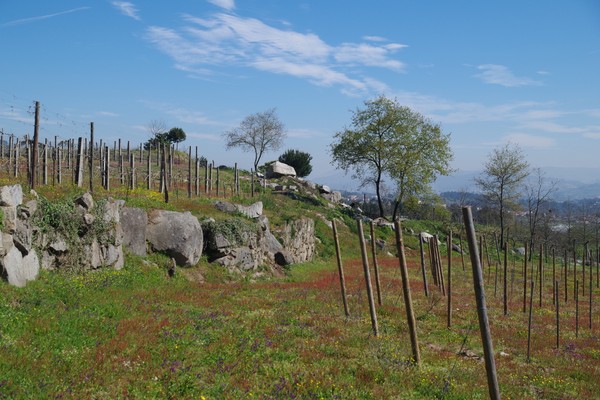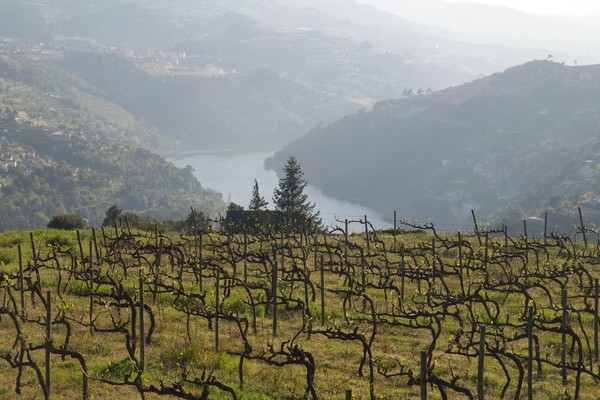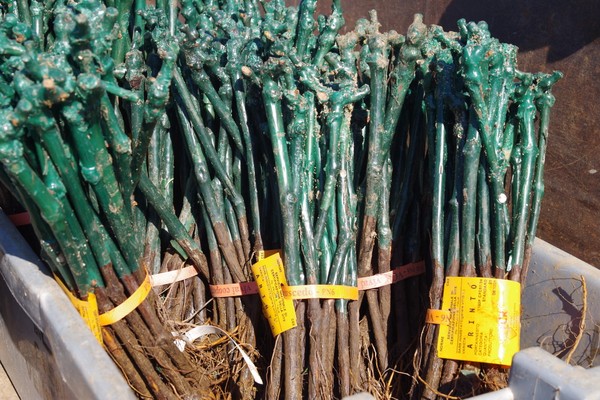|
Visiting Vinho Verde
A short trip to northern Portugal, focusing on
new wave single-variety Vinho Verde

In April 2015 I went on a
brief trip to northern Portugal with importer Nick Oakley. Nick
wanted to plug something he's believed in for a while:
single-variety Vinho Verde. We visited four producers who are
leading the way with this concept.
Typical, traditional white
Vinho Verde is a light, acidic, fresh, slightly spritzy concoction.
It's not a wine that is taken seriously: it is meant to quench
thirst. There's also a red version, which is tart, acidic and
extremely vivid, tasting like an unfinished cask sample. Both red
and white can work well with the local food, and I have a particular
penchant for red Vinho Verde, which I find delicious in the right
context. But normal people outside Portugal have never really got
their heads around Vinho Verde, and it has been a hard sell, even
though it is usually cheap.

Meanwhile, across the
border in Galicia, there's been a lot of interest in Albariņo from
Rias Baixas. These wines have had a lot of traction and fetch good
prices. Albariņo is, of course, the same variety as Portugal's
Alvarinho. Apart from the fact that they are from Spain, the
difference is that they are made as more traditional dry white
wines, without the spritz of Vinho Verde, and with a bit more body.

So, the question: is there
a market opportunity for more serious Vinho Verde, maintaining the
delicious brightness that the Altantic-influenced climate brings but
adding to it a bit of body and removing the effervescence? And might
making single-variety examples help people understand these wines
better? This is what I wanted to explore. And here are my reports.
 Introduction Introduction
 Casal
de Ventozela Casal
de Ventozela
 Quinta
de Gomariz Quinta
de Gomariz
 Cazas
Novas Cazas
Novas
 Quinta
de Covela Quinta
de Covela
See
also:
 Visiting
Vinho Verde (2008) (series) Visiting
Vinho Verde (2008) (series)
Wines
tasted 04/15
Find these wines with wine-searcher.com
Back
to top
|

